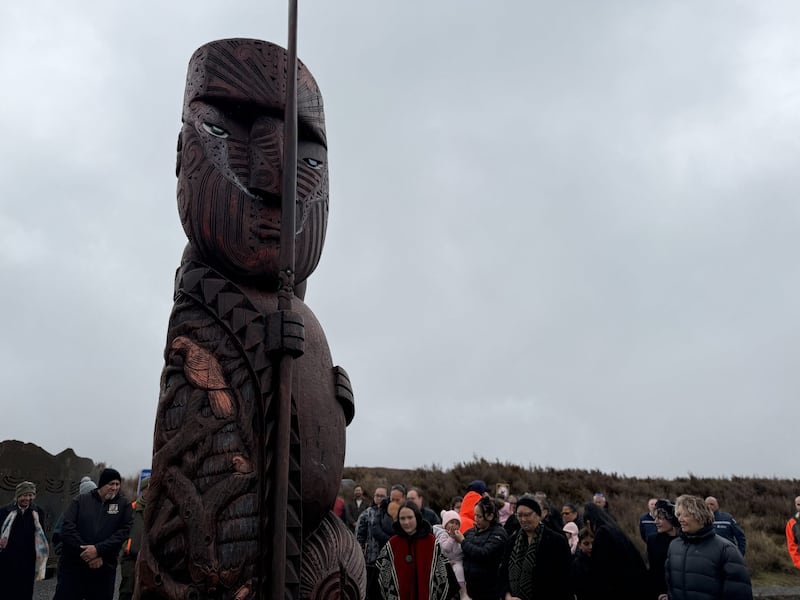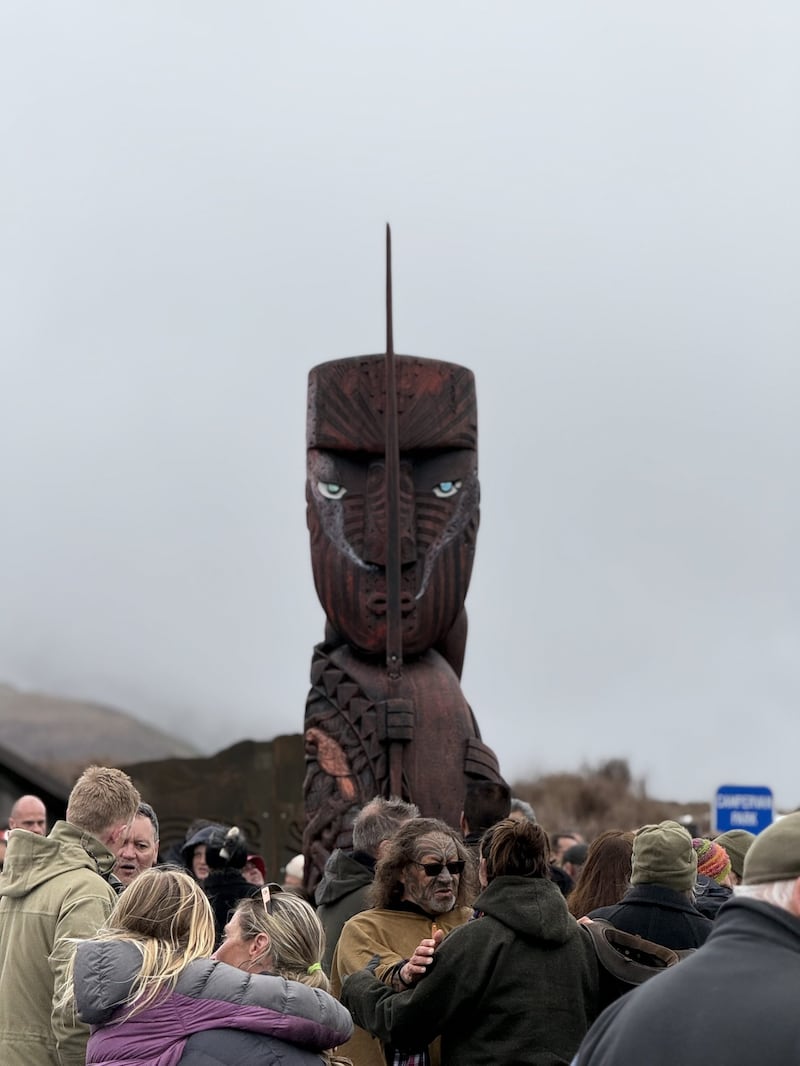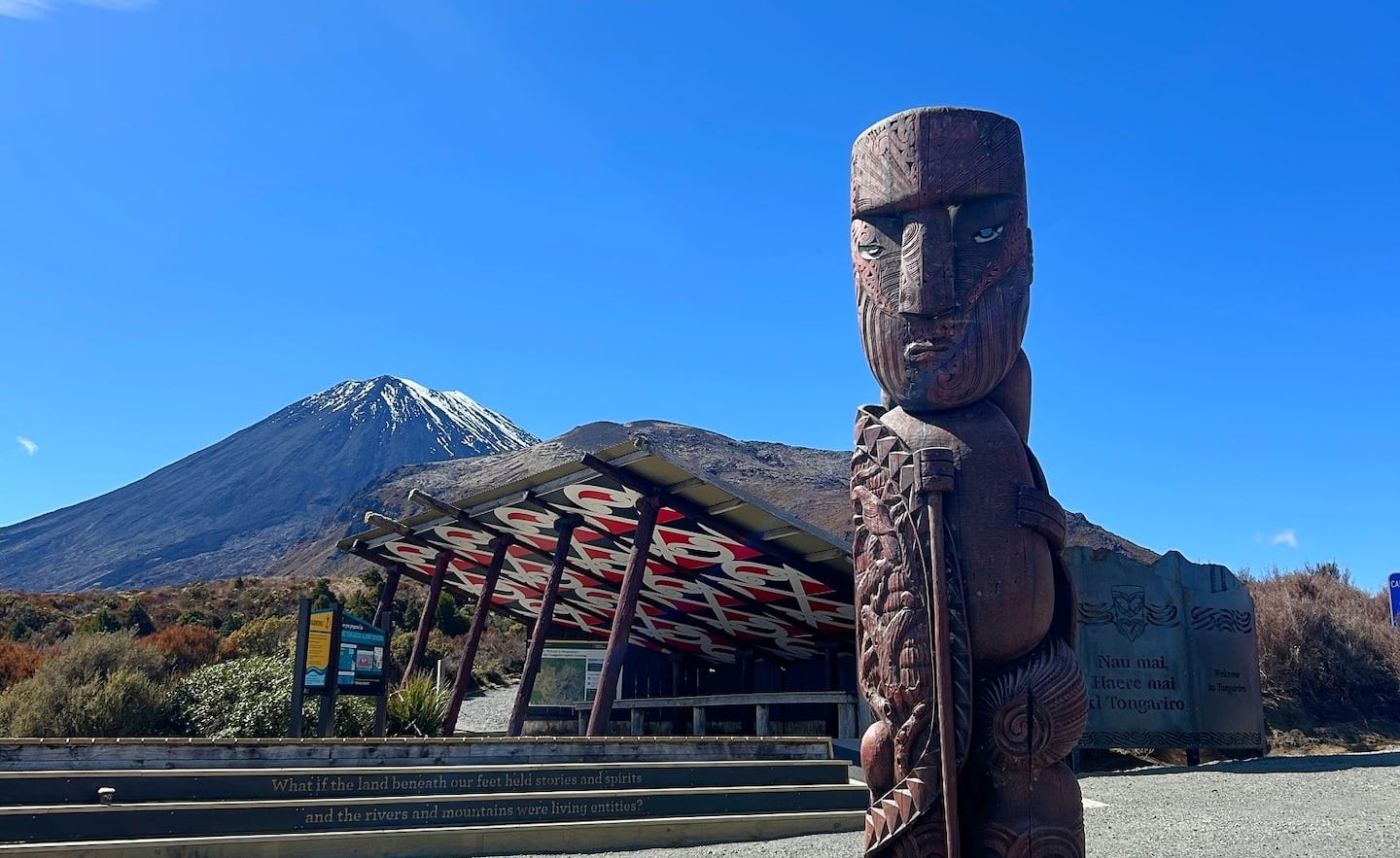A new pou whenua has been installed at the beginning of the Tongariro Alpine Crossing to recognise the cultural significance of the landscape and protect hikers.
Conservation Minister Tama Potaka says the carved, four-metre pou whenua will introduce visitors to the sacred landscape they are entering and help build understanding and respect.
The towering pou whenua at Mangatepopo, where the Tongariro Alpine Crossing begins, represents Te Ririō, a significant figure in the histories of Ngāti Hikairo ki Tongariro, a hapū of Ngāti Tūwharetoa.
Ngāti Hikairo ki Tongariro rangatira Te Ngaehe Wanikau said Te Ririō serves as a kaitiaki, or guardian, for those who walk the Tongariro Alpine Crossing.
The installation was a collaboration between Ngāti Hikairo ki Tongariro and Te Papa Atawhai Department of Conservation (DOC).
Working together on the project to promote cultural awareness across the region had strengthened the relationship between the two in recent years, Wanikau said.
The Minister attended the unveiling and blessing of Te Ririō on Friday.

He said the pou and other new features at the start of the track focus on cultural understanding and safety.
“From the time Ngatoroirangi, paramount ancestor of Ngāti Tūwharetoa, ascended Tongariro, the maunga has been of great importance for his descendants,” Potaka said.
“The pou and cultural installation at Mangatepopo introduce visitors to the sacred landscape they are entering.
“[They] reflect the mana of Tongariro, to help perpetuate ongoing respect for the land along the popular trail.”
Te Ririō was carved by local kaiwhakairo, father and son Edwin and Kurt Barham.
A second pou will follow in coming months at the Ketetahi track end, expressing other stories significant to hapū and iwi.
It is one of six pou whenua destined for Tongariro National Park, commissioned from local kaiwhakairo Hayz Isherwood, Te Ururangi Rowe, and Edwin and Kurt Barham.
Tongariro National Park is one of only 29 sites in the world with dual World Heritage status, recognising its cultural and natural heritage values.
It is the first of only three World Heritage sites in Aotearoa New Zealand and was the first in the world to be given dual World Heritage status.
“The mountain and the park offer an astonishing, unique opportunity to visit and see a beautiful, important, and culturally significant place,” Potaka said.
“The installations build on visitor management improvements which began in 2023 with the introduction of a free booking system for walkers and Manaaki Rangers to welcome and inform visitors and check bookings.”
Te Papa Atawhai operations manager for Tongariro District, George Taylor, said the hapū and DOC had been making changes to ensure the experience of walking the Tongariro Alpine Crossing was safe, sustainable, and respected the cultural significance of Tongariro.
He described the unveiling as a milestone.

“It’s a reflection of the mahi we’ve been doing with Ngāti Hikairo for the Tongariro Alpine Crossing, and it’s also a recognition of the cultural significance of Tongariro for Ngāti Hikairo,” Taylor said.
“We recognise that mana whenua have been here for ages. The significance of the landscape is paramount to the people.”
Taylor said mana whenua have had to tolerate the impacts of the popularity of the Tongariro Alpine Crossing, which is walked by around 150,000 people each year.
“There’s always been a tension of this scar across Tongariro. Ngāti Hikairo have been very tolerant over the years.”
Taylor said the project gained traction in the past two or three years, and built relationships between DOC and mana whenua.
“We now collaborate with mana whenua in governance, in operations and in the forums that you see today at all levels to achieve the mahi.
“This is also reflected right down to the ground level where Manaaki Rangers are in place to provide safety and cultural information for manuhiri as they undertake the Tongariro Alpine Crossing.”
Taylor said the Te Ririō project aimed to provide a sustainable experience for future generations.
“Our aim now is to apply that kaupapa throughout the Tongariro National Park, working with all iwi to provide an appropriate visitor experience, an awareness of cultural aspects of the park and the maunga, and of all aspects within the Tongariro National Park.”
LDR is local body journalism co-funded by RNZ and NZ On Air



